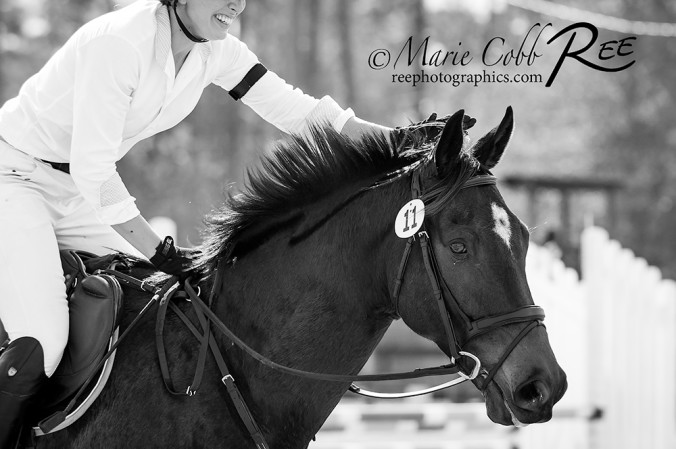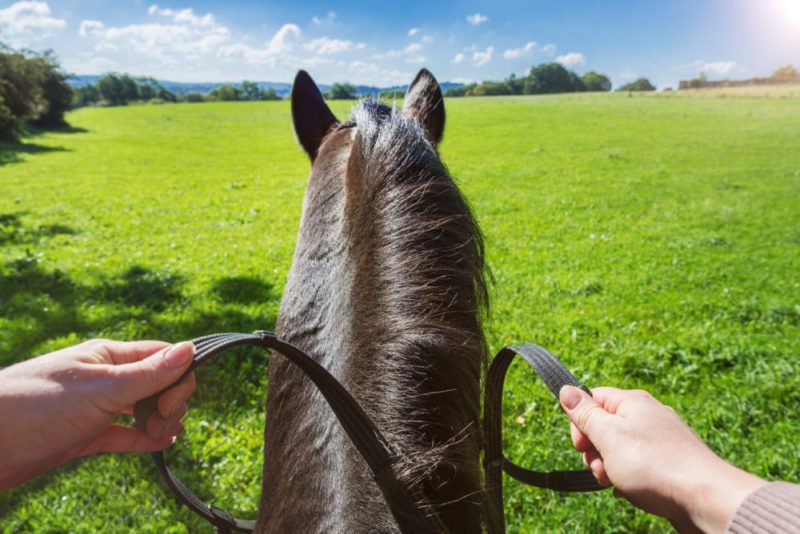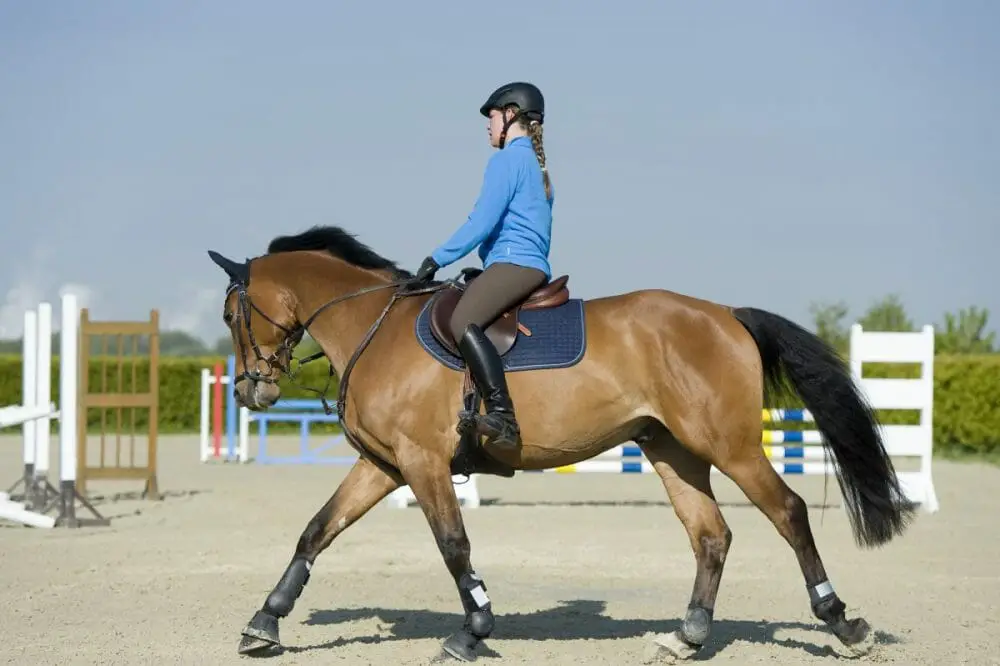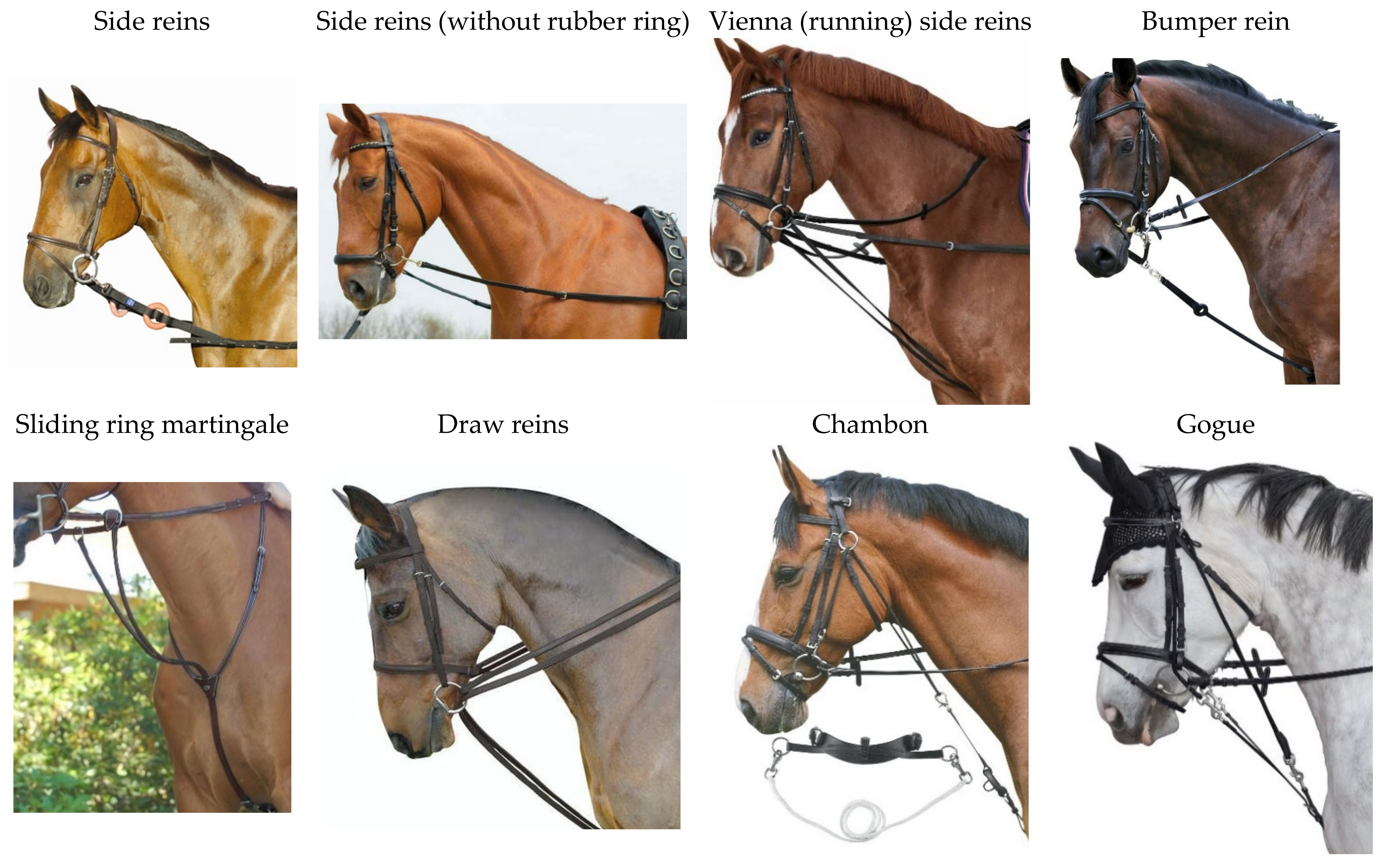Have you ever wondered how visualization can help improve your horseback riding skills? It may sound strange, but visualizing yourself riding a horse can actually be a powerful tool for improvement. In this article, we’ll explore the role that visualization plays in enhancing your riding abilities and how it can help you become a better equestrian. Whether you’re a beginner or an experienced rider, understanding the power of visualization can take your horseback riding to the next level. So, saddle up and get ready to learn more about this fascinating topic!
When it comes to horseback riding, there’s much more to it than simply sitting on a horse and hoping for the best. Visualization is a technique that athletes in various sports use to mentally prepare themselves and enhance their performance. By vividly picturing yourself riding a horse, you engage the same neural pathways that are activated when you’re actually in the saddle. This mental exercise helps you develop a strong mind-body connection, leading to improved coordination, balance, and overall riding skill. In our upcoming article on “The Role of Visualization in Improving Horseback Riding Skills”, we’ll delve deeper into the benefits of visualization and provide practical tips on how to incorporate this technique into your riding routine. So stay tuned, because you’re about to discover a game-changing tool that can revolutionize your equestrian journey!
The Role of Visualization in Improving Horseback Riding Skills
Horseback riding is not only a thrilling and enjoyable activity but also a skill that requires finesse, precision, and effective communication between horse and rider. To become a proficient rider, it is crucial to develop a strong mind-body connection, improve focus and concentration, and boost confidence. One effective technique that can greatly aid in achieving these goals is visualization.

Enhance Muscle Memory through Mental Practice
Visualization, also known as mental imagery or mental rehearsal, involves creating vivid mental images of performing specific riding skills or scenarios. When you imagine yourself riding, your brain activates the same neural pathways as if you were actually performing the action. This process can enhance muscle memory and improve your ability to execute movements smoothly and effortlessly when riding.
Imagine yourself walking, trotting, or cantering on your horse. Picture the feeling of the reins in your hands, the movement of your body as you follow the horse’s rhythm, and the sound of the hooves hitting the ground. By repeatedly visualizing these actions, you reinforce the neural pathways responsible for executing them, leading to improved muscle memory and coordination.
Improve Focus and Concentration
In the fast-paced and sometimes unpredictable world of horseback riding, maintaining focus and concentration is essential. Visualization can help you stay present and in the moment, allowing you to react quickly and effectively to any situation that may arise while riding.
Before mounting your horse, take a few moments to close your eyes and imagine yourself in the saddle. Visualize the surroundings, the sounds, and the movements of your horse. By practicing this mental exercise, you train your mind to remain focused and attentive, even when distractions are present.

Develop a Strong Mind-Body Connection
To excel in horseback riding, you must establish a deep connection between your mind and body. Visualization can strengthen this connection by enhancing your kinesthetic awareness and proprioception, which are essential for developing effective riding skills.
During your visualization sessions, incorporate sensory details to make the experience as realistic as possible. Feel the texture of the saddle, the grip of the reins, and the movement of your body as you ride. Engage all your senses to establish a strong mental representation of the physical sensations associated with horseback riding. This sensory integration will improve your ability to respond intuitively to your horse’s movements and signals.
Boost Confidence and Reduce Anxiety
Confidence plays a crucial role in horseback riding. When you feel confident in your abilities, you are more likely to take risks, push your limits, and achieve higher levels of success. Visualization can significantly contribute to boosting your confidence by allowing you to mentally rehearse successful rides and overcome any fear or anxiety associated with riding.
Imagine yourself riding flawlessly, executing complex maneuvers with ease, and effortlessly communicating with your horse. Visualize yourself overcoming any obstacles or challenges that may arise during a ride. By repeatedly practicing these mental scenarios, you build a reservoir of positive experiences that can help counteract any self-doubt or anxiety you may face while riding.

Techniques for Visualizing Horseback Riding Skills
To effectively harness the power of visualization, there are various techniques you can employ. Experiment with these techniques to find the ones that resonate with you and yield the best results:
Creating vivid mental images
When visualizing riding skills, strive to make the mental images as detailed and vivid as possible. Engage all your senses and try to recreate the experience as realistically as you can. The more vivid and detailed the mental imagery, the more effective the visualization practice will be.
Imagining successful rides
Visualize yourself successfully completing different riding exercises, such as trotting over ground poles or executing a perfect flying lead change. See yourself and your horse moving in harmony, with effortless communication and impeccable timing. By repeatedly imagining successful rides, you build confidence and create a blueprint for success.
Incorporating sensory details
As mentioned earlier, including sensory details in your visualization practice can enhance the effectiveness of the exercise. Feel the horse’s movement beneath you, hear the sound of hooves hitting the ground, and smell the familiar scents of the barn. By engaging all your senses, you create a more realistic and immersive mental experience.
Using guided imagery
Guided imagery involves listening to pre-recorded scripts or instructions that lead you through a visualization exercise. These guided sessions can be found in the form of audio recordings or smartphone apps. By following along with the guided imagery, you can deepen your focus and relaxation during visualization.
Visualization Exercises for Horseback Riding
To fully integrate visualization into your horseback riding routine, incorporate the following exercises into your practice:
Visualizing different riding scenarios
Imagine yourself riding in various contexts and environments. Visualize riding in an open field, navigating a challenging trail, or performing in a competitive arena. This exercise helps you prepare for different riding situations and adapt to changing surroundings.
Mental rehearsal for specific skills
Select one particular riding skill or movement you wish to improve. Mentally rehearse this skill, breaking it down into smaller components and imagining yourself executing each one with precision. Visualize the correct body posture, balance, and aids required for successfully performing the skill.
Simulating challenging situations
Identify any areas of riding that you find particularly challenging or intimidating. Visualize yourself successfully navigating these challenges. For example, if you struggle with jumping, imagine yourself approaching the jump confidently, maintaining a steady rhythm, and executing a flawless jump.
Imagining riding in different terrains
Envision yourself riding in different terrains and on different types of horses. Visualize riding on a sandy beach, through a dense forest, or on a mountain trail. This exercise helps expand your flexibility and adaptability as a rider, preparing you for varying riding conditions.

Visualization Tools and Resources for Equestrians
To enhance your visualization practice, consider utilizing the following tools and resources:
Visualization apps and software
There are various smartphone apps and software programs specifically designed to guide you through visualization exercises. These apps often incorporate ambient sounds, calming music, and scripted scenarios to help facilitate a deeper level of visualization.
Guided meditation recordings
Meditation recordings that focus on horseback riding can be an excellent resource for equestrians. These recordings combine relaxation techniques with visualization exercises, allowing you to cultivate a calm and focused state of mind while visualizing your riding skills.
Visualization books and guides
Numerous books and guides are available that delve into the subject of visualization for horseback riding. These resources often provide step-by-step instructions, practical exercises, and real-life examples to help you develop and refine your visualization practice.
Online visualization communities
Joining online communities or forums dedicated to visualization and horseback riding can provide valuable support and inspiration. Interacting with other equestrians who are also practicing visualization can offer new perspectives, tips, and encouragement.
The Science behind Visualization and Skill Improvement
The effectiveness of visualization in improving horseback riding skills is supported by scientific research. Several key scientific principles contribute to the benefits of visualization:
Neuroplasticity and brain rewiring
Neuroplasticity refers to the brain’s ability to reorganize and form new neural connections throughout life. When you visualize a specific action or skill, your brain activates the same neural networks as it would during physical execution. Through repeated visualization, these neural connections strengthen, leading to improved motor skills and coordination.
Activation of mirror neurons
Mirror neurons are specialized cells in the brain that fire when we observe someone else performing an action. These neurons also activate when we mentally rehearse or visualize performing the same action ourselves. By visualizing riding skills, you engage your mirror neurons, reinforcing the neural pathways associated with those skills.
Improvement of coordination and timing
Visualization helps improve coordination and timing by enhancing the connection between the brain and muscles. When you visualize specific riding movements, the neural pathways responsible for coordinating those movements become more efficient. This improved neural communication translates into better coordination and timing when you physically perform the movements on a horse.
Enhancement of proprioception
Proprioception is the body’s awareness of its position and movement in space. Visualization exercises that focus on sensory details can enhance your proprioceptive abilities. By mentally tracking your body position and movement during visualization, you improve your ability to sense and control your body position while riding.

Case Studies: Success Stories through Visualization
Many riders, both professional and amateur, have experienced significant improvements in their riding skills through the practice of visualization. Here are a few success stories showcasing the power of visualization in horseback riding:
Professional riders’ experiences
Professional riders often attribute their success to the power of visualization. Many top equestrians incorporate visualization into their training routines and pre-competition rituals. Visualizing successful rounds, perfect jumps, and harmonious communication with their horses allows them to perform at their best under pressure.
Amateur riders’ personal accounts
Amateur riders who have embraced visualization have reported increased confidence, improved communication with their horses, and enhanced riding performance. By incorporating visualization into their training programs, these riders have overcome mental blocks, fears, and anxieties, leading to a more enjoyable and successful riding experience.
Testimonials from riding instructors
Riding instructors and trainers have witnessed remarkable transformations in their students who have incorporated visualization into their practice. Students who struggled with specific riding skills or lacked confidence have shown tremendous growth and improvement by regularly visualizing the desired skills and scenarios.
Rehabilitation using visualization techniques
Visualization has also been utilized in the rehabilitation of equestrians recovering from injuries. By visualizing riding movements and exercises, injured riders can maintain a mental connection with riding and expedite their physical recovery. Visualization helps rebuild confidence, alleviate anxiety, and prepare the mind and body for a successful return to riding.
Combining Visualization with Physical Practice
To maximize the benefits of visualization, it is essential to combine it with physical practice. While visualization can improve mental skills and enhance confidence, physical practice is still crucial for refining the physical aspects of riding. Here are some ways to integrate visualization into your horseback riding routine:
Integrating mental imagery during warm-up and cool-down
During the warm-up and cool-down phases of your riding session, incorporate a few minutes of visualization. Close your eyes and mentally rehearse the movements and exercises you will be performing during the ride. This helps prime your mind and body for the upcoming physical practice.
Using visualization as a pre-competition routine
Before competing, spend some time visualizing yourself performing a flawless round or a perfect dressage test. Visualize every aspect, from entering the arena to executing each movement with grace and precision. By mentally rehearsing success, you prepare yourself mentally and emotionally for a successful competition.
Incorporating visual cues during riding lessons
Incorporate visual cues and imagery into your riding lessons. For example, your instructor may prompt you to visualize a specific image or feeling while performing a particular exercise. This enhances your focus, helps develop correct body position, and reinforces the desired riding technique.
Utilizing visualization for injury prevention
Visualization can also be used as a preventative tool. By visualizing correct riding techniques, movement patterns, and balanced body positions, you can help reduce the risk of injury. Visualization can promote awareness of your body’s alignment and positioning, enabling you to ride more safely and effectively.
Visualization in Horseback Riding Competitions
Competitions can be mentally and emotionally demanding, often leading to anxiety and pressure. Visualization can help equestrians prepare for competitions and manage the associated stress. Here’s how visualization can be utilized in the context of horseback riding competitions:
Mental preparation for competitions
In the days leading up to a competition, spend time visualizing successful rounds, visualizing the competition atmosphere, and familiarizing yourself with the competition venue. By mentally rehearsing the scenarios, you reduce uncertainties, build confidence, and prepare yourself mentally for the challenges ahead.
Visualizing successful rounds and performances
Mentally rehearsing successful rounds and performances is a powerful visualization technique for competitions. Visualize yourself and your horse performing flawlessly, executing each movement with precision and grace. By repeatedly practicing these successful mental scenarios, you create a positive expectation for your performance.
Managing competition-related stress and pressure
Competition-related stress and pressure can negatively impact performance. Visualization can help alleviate these negative effects by creating a mental state of calmness and focus. Through visualization, you can mentally simulate stressful situations, such as going into a busy show ring or dealing with unexpected distractions, and practice maintaining composure and concentration.
Utilizing visualization during course walks
Before competing in disciplines such as jumping or cross-country, walkers are often conducted to familiarize riders with the course layout and obstacles. By mentally visualizing the course while walking, you can reinforce your understanding of the track, mentally plan your approach to each jump or element, and refine your strategies.
Visualization for Horseback Riding Instructors
As a horseback riding instructor, you can play a vital role in introducing visualization techniques to your students. By teaching your students how to effectively visualize, you empower them to enhance their riding skills and develop a more confident and connected relationship with their horses. Here are some ways to weave visualization into your teaching:
Teaching visualization techniques to students
Introduce the concept of visualization to your students and explain its benefits in relation to horseback riding. Teach them various visualization techniques and guide them through visualization exercises during lessons. Encourage them to incorporate visualization into their daily riding practice for optimal results.
Using visualization as a teaching tool
Use visualization as a teaching tool by describing scenarios or movements and prompting students to mentally visualize them before physically attempting them. This primes their minds and bodies for successful execution and helps reinforce correct riding techniques.
Enhancing lesson plans with mental practice
Incorporate visualization exercises into your lesson plans. Devote a portion of each lesson to visualizing specific riding skills, movements, or scenarios relevant to the lesson’s objectives. This cultivates a deeper understanding and embodiment of the concepts being taught.
Empowering students through visualization
Encourage your students to set goals and visualize themselves achieving those goals. Help them visualize their progress and overcome any challenges or barriers they may be facing. By empowering your students with visualization techniques, you foster a sense of ownership and self-efficacy in their riding journeys.
Visualization in Horseback Riding Training Programs
Visualization can be a valuable addition to horseback riding training programs. By incorporating visualization exercises into your training schedules, riders can further reinforce their training and improve their overall performance. Here are some ways to integrate visualization into training programs:
Incorporating visualization into training schedules
Designate specific times during training sessions for visualization exercises. Encourage riders to practice mental imagery individually or as a group, focusing on the skills or techniques targeted for that particular training session. Make visualization a regular and integral part of the training program.
Visualizing horse-rider communication
Devote visualization exercises to enhance the communication and connection between horse and rider. Encourage riders to mentally visualize clear and effective aids, precise timing, and seamless horse-rider coordination. By reinforcing this mental link, riders can strengthen their communication skills with their horses.
Mental imagery for mastering specific riding techniques
Visualize riders performing specific riding techniques to improve their mastery of those skills. Whether it’s perfecting a leg yield, executing a flying lead change, or nailing a dressage movement, visualization can help riders mentally rehearse each step with precision, leading to improved physical execution.
Developing successful training routines through visualization
Visualize the entire training routine, from warm-up exercises to cool-down procedures. By mentally rehearsing the entire training session, riders can establish a clear structure and purpose, helping them remain focused and motivated throughout the training process.
Visualization as a Tool for Overcoming Riding Challenges
Riding challenges such as fear, anxiety, mental blocks, and specific fears and phobias can hinder progress and enjoyment in horseback riding. Visualization can be a powerful tool for addressing and overcoming these challenges. Here’s how visualization can help in overcoming common riding hurdles:
Fear and anxiety management
Visualize yourself confidently riding through situations that generate fear or anxiety. Picture yourself maintaining composure, controlling your emotions, and effectively communicating with your horse. By repeatedly practicing these positive mental scenarios, you gradually diminish the fear or anxiety associated with those situations.
Rebuilding confidence after accidents or falls
Experiencing an accident or fall can shake a rider’s confidence. Visualization can aid in the process of rebuilding this confidence. Mentally rehearse successful rides and jumps, envisioning yourself executing each movement with ease and grace. By focusing on positive mental imagery, you restore your confidence and resilience.
Overcoming mental blocks
Mental blocks can impede progress and prevent riders from mastering certain riding techniques. Visualization can help break through these mental barriers. Mentally rehearse the blocked movement or exercise, paying attention to every detail and imagining yourself overcoming any obstacles. Gradually, the mental block diminishes, allowing you to progress and achieve mastery.
Addressing specific riding fears and phobias
Individual riders may have specific fears or phobias related to horseback riding, such as fear of jumping or fear of galloping. Visualization can assist in addressing these fears by gradually exposing yourself to the feared scenario within the safety of your mind. Repeatedly visualize yourself successfully navigating the feared situation, focusing on creating positive associations and building confidence.
The Role of Visualization in Developing Riding Techniques
Visualization can significantly contribute to the development and refinement of essential riding techniques. By mentally rehearsing correct body posture, balance, and aids, riders can improve their overall skill and execution. Here are some areas where visualization plays a vital role in developing riding techniques:
Achieving correct body posture and balance
Visualize yourself riding with correct body posture and balance. Mentally rehearse the feeling of sitting tall in the saddle, aligning your shoulders, hips, and heels. By visualizing correct posture and balance, these principles can become ingrained in your muscle memory, leading to improved riding form.
Improving leg and seat aids
Visualization is particularly effective for refining leg and seat aids. Visualize your legs actively engaging your horse’s sides, applying precise pressure and release. Imagine the connection between your seat and the horse’s movements, visualizing effective weight shifts and half-seat positions. Through repeated visualization, your aids become more precise and subtle when physically applied.
Enhancing rein and hand coordination
Rein and hand coordination are essential for communicating with your horse and maintaining control. Visualize your hands maintaining a consistent and elastic contact with the horse’s mouth. Mentally rehearse the subtle adjustments and rein movements required for different riding situations. By practicing this mental coordination, your rein and hand skills improve when riding.
Perfecting jumping and dressage movements
Visualization is particularly beneficial for perfecting jumping and dressage movements. Mentally rehearse executing complex dressage patterns, feeling the precise timing required for each movement. Visualize successful jumps, imagining the feeling of your horse powerfully and precisely clearing the obstacles. By repeatedly visualizing these movements, you reinforce the correct techniques and build confidence.
Visualization and the Connection with Horses
Beyond skill improvement, visualization can help deepen the connection and rapport between horse and rider. By developing a deeper understanding of your horse’s needs and enhancing communication and responsiveness, you create a more harmonious partnership. Here’s how visualization contributes to this connection:
Building trust and rapport with your horse
Visualization allows you to connect with your horse on a deeper level, building trust and rapport. As you mentally rehearse successful rides and exercises, you establish a positive and harmonious relationship in your mind. Your horse can sense this positive energy, strengthening the bond between you both.
Developing a deeper understanding of your horse’s needs
Through visualization, you can develop a more profound understanding of your horse’s needs and behaviors. Picture yourself tuning into your horse’s movements, expressions, and reactions. By visualizing your horse’s body language, you become more responsive to their needs and can better anticipate their actions.
Improving communication and responsiveness
Visualization can enhance your ability to effectively communicate with your horse. Mentally rehearse clear and precise aids, imagining your horse’s immediate response. Visualize seamless communication and timely execution of requested movements. This mental practice deepens your sensitivity and responsiveness as a rider.
Creating a harmonious partnership through visualization
By visualizing a harmonious partnership with your horse, you cultivate a positive and cooperative atmosphere. Mentally rehearse moments of connection, trust, and unity. Through visualization, you foster a mutually beneficial relationship, where both you and your horse thrive and enjoy your time together.
Conclusion
Visualization is a powerful tool that can greatly contribute to improving horseback riding skills. By incorporating visualization exercises into your training routine, you enhance muscle memory, improve focus and concentration, strengthen the mind-body connection, boost confidence, and reduce anxiety. From developing correct riding techniques to overcoming riding challenges and nurturing a deep connection with your horse, visualization has the potential to transform your riding experience. So, embrace the power of visualization, and let your mind lead the way to elevated riding skills and a more rewarding equestrian journey.
For more information and resources on horseback riding and visualization, visit http://horsebackridingdude.com, your ultimate destination for all things horseback riding.
